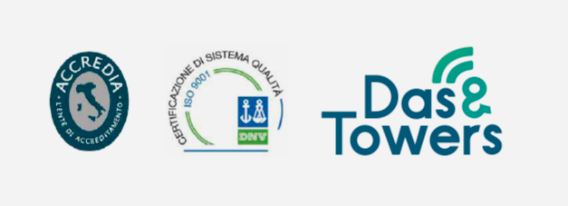Shopping Center.
Hospital.
Clinics.
RSA.
Parking.
Historical Centre.
Hotels.
Stadiums.
Enjoy unprecedented coverage and connection speeds.

Guests can use their smartphones to manage their stay, communicate with staff, and obtain useful information. They can also select menus and book services such as laundry through a virtual concierge.
Connectivity enables the provision of devices like tablets, smartphones, and smartwatches to staff, keeping them always in touch to offer higher service to customers.
Customers can check-in and check-out via mobile devices without the need to interact with hotel staff.
The rooms are equipped with smart devices such as virtual assistants, tablets, and smart TVs. Thanks to connectivity, the service offered becomes more efficient and the stay experience more innovative.

With the evolution of branches towards less focus on cashier services, connectivity becomes essential to educate customers on using mobile apps and digital services on their devices.
A multichannel bank requires high-quality connectivity for video conferences between managers, customers, and educators, as well as for staff training via video.
Cloud migration is a crucial issue for banks; connectivity facilitates the transfer and storage of data in the cloud and between different branches, improving operational efficiency.
Branches are introducing touchscreen multimedia kiosks for information consultation and service automation, such as digital signage and regulation viewing.

Connectivity enhances the customer experience during digital payments (contactless, QR code, use of smartphones and other devices), reducing queues and waiting times.
The adoption of electronic labels allows automatic and instant price changes, controlled by the headquarters, reducing errors and standardizing promotions.
Omnichannel operations and the use of kiosks for self-service activities (viewing offers, store map, loyalty program status) improve the customer experience and optimize operations.
Proximity marketing uses the localization of customers’ smartphones to offer discounts and targeted awareness campaigns.

Guests can pay and recharge their cars at the parking columns using their smartphones.
Connectivity enables low-cost smart parking solutions without the need for wiring in the parking lot.
The ability to make calls within the parking lot, especially on underground levels, is crucial for user safety.
Connectivity improves the customer experience by enabling digital payment directly through the smartphone.

Advanced man-down systems increase the safety of the company and workers.
Connectivity allows the implementation of internal positioning systems for personnel and objects within the facilities.
Connectivity enables the use of IoT (Internet of Things) devices which, through sensors and cameras, reduce waste, improve inventory management, and implement energy-saving solutions.
Video surveillance solutions and environmental parameter monitoring can be used for access control and for monitoring production processes and quality.
How much does it cost?
The service is completely free, including both installation and maintenance. It represents a strategic opportunity to improve cellular coverage within complex structures, increasing user satisfaction and property value, while ensuring uniform and reliable connectivity for everyone.
What’s the difference between Wi-Fi and DAS?
Wi-Fi is used to create local wireless networks, while DAS is used to enhance cellular network coverage in specific areas. Wi-Fi uses specific frequencies for data transmission within a limited area, while DAS distributes cellular signals over large areas through distributed antennas. Wi-Fi is common in home environments for Internet access, whereas DAS is used in large facilities to ensure reliable cellular coverage.
Does it create interference?
DAS must be properly designed and installed, ensuring no interference with other systems. This includes using the correct frequencies, appropriately configuring the antennas, and utilizing interference control devices.
Is it harmful to the environment and people?
DAS antennas emit radio waves, which are a form of non-ionizing radiation. Scientific studies have not shown that electromagnetic emissions at levels typical of communication antennas cause harm to human health or the environment. However, it is important that installations follow regulations and guidelines to ensure that emissions remain within safe limits.
How long does the installation take?
Installation is very quick. The process can take between 4 to 8 business days.
Can it support multiple mobile operators simultaneously?
Yes, DAS can support multiple operators simultaneously. This is one of the main advantages of DAS systems, especially in environments like stadiums, shopping centers, airports, offices, and other public or corporate spaces.Is it efficient in data management tasks?
A well-designed and implemented DAS can offer significant improvements in mobile data management by increasing coverage, capacity, and service quality, while reducing congestion and interference. This makes it a highly effective solution for mobile data needs in various contexts.
How much does it cost?
The service is completely free, including both installation and maintenance. It represents a strategic opportunity to improve cellular coverage within complex structures, increasing user satisfaction and property value, while ensuring uniform and reliable connectivity for everyone.
What’s the difference between Wi-Fi and DAS?
Wi-Fi is used to create local wireless networks, while DAS is used to enhance cellular network coverage in specific areas. Wi-Fi uses specific frequencies for data transmission within a limited area, while DAS distributes cellular signals over large areas through distributed antennas. Wi-Fi is common in home environments for Internet access, whereas DAS is used in large facilities to ensure reliable cellular coverage.
Does it create interference?
DAS must be properly designed and installed, ensuring no interference with other systems. This includes using the correct frequencies, appropriately configuring the antennas, and utilizing interference control devices.
Is it harmful to the environment and people?
DAS antennas emit radio waves, which are a form of non-ionizing radiation. Scientific studies have not shown that electromagnetic emissions at levels typical of communication antennas cause harm to human health or the environment. However, it is important that installations follow regulations and guidelines to ensure that emissions remain within safe limits.
How long does the installation take?
Installation is very quick. The process can take between 4 to 8 business days.
Can it support multiple mobile operators simultaneously?
Yes, DAS can support multiple operators simultaneously. This is one of the main advantages of DAS systems, especially in environments like stadiums, shopping centers, airports, offices, and other public or corporate spaces.Is it efficient in data management tasks?
A well-designed and implemented DAS can offer significant improvements in mobile data management by increasing coverage, capacity, and service quality, while reducing congestion and interference. This makes it a highly effective solution for mobile data needs in various contexts.
Enjoy unprecedented coverage and connection speeds.






















DECA has many partners, including:
























